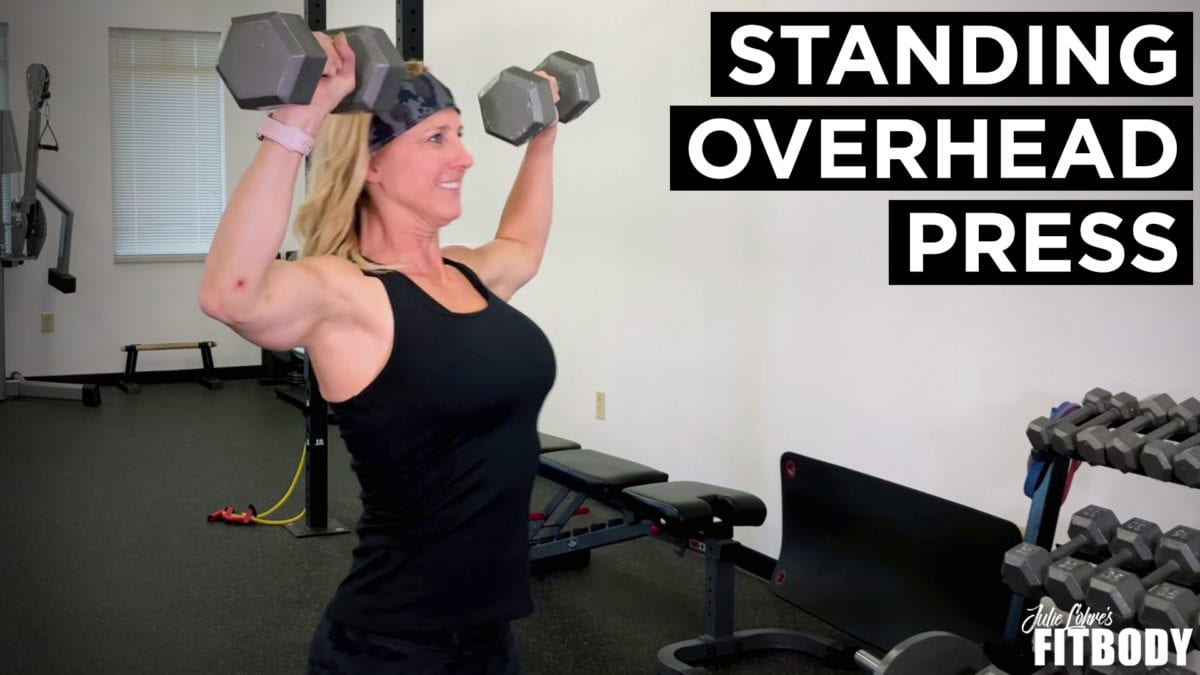The Standing Dumbbell Press is a great exercise to start learning how to do overhead presses while in the standing position. Pressing weight using dumbells is much easier and requires less flexibility than pressing weights with a barbell over your head.
In this article I will provide clear instructions, effective form tips, and common form mistakes so you can complete a Standing Dumbbell Press safely and effectively.
Instructions
-
- Curl, or clean a set of dumbbells to shoulder level
- Stand with your feet shoulder width apart, with your knees locked, glutes contracted
- While keeping your low back straight, press the dumbbell overhead with your so that your palm faces forward when your arm is fully extended and your elbow is locked
- Pull the weight down slow and controlled to the starting position with your palm facing your body
Form Tips
-
- Keep your glutes and abs engaged and contracted as you press the dum-bells overhead.
- At the top of the overhead press, your body should create a solid single line without curve in your back, knees or torso.
- Keep your head and neck in a neutral and straight position by looking forward and avoiding your head falling forward or pushing back.
- Breath inward on the downward motion and exhale as you press the weight overhead.
Common Mistakes
1. Leaning backward and arching the low back
A dangerous mistake in form when pressing weight over your head – with any weight. If you don’t have enough shoulder flexibility or you are using a weight that’s too heavy, you will likely compensate by rounding your lower back. This back position can lead to serious injuries over time.
Another similar form mistake that is also dangerous is sticking your ribcage out and forward which means you are not engaging your core and abs and can introduce a situation that compromises your spine.
3. Leaning side to side in order to press up
Training with dumbbells allows you to correct muscle imbalances between the left and right side of your body, however if one arm is less strong as the other – you may have trouble keeping your body upright.
Proper form is key in keeping your body upright and strong so that you do not sway from side to side or worse, lean over side to side as you press the dumbbell overhead.

